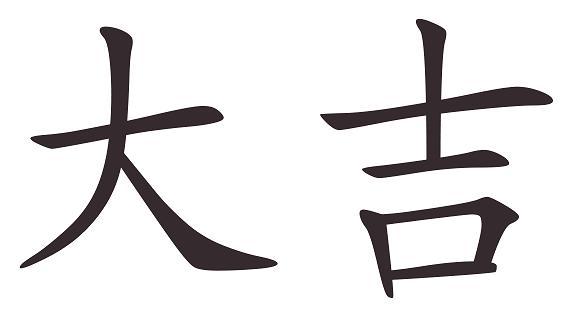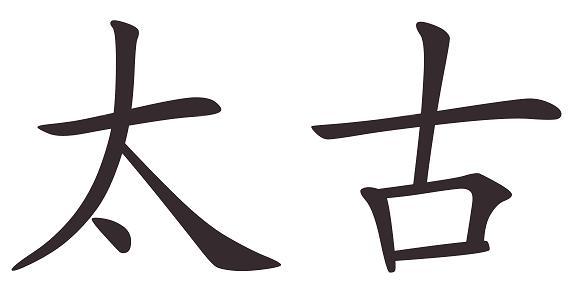-
Posts
3,854 -
Joined
-
Last visited
Content Type
Profiles
Forums
Store
Help Articles
Everything posted by hzrt8w
-
Thanks for sharing your experience nakji. I found that different restaurants in Macau offer different versions of African Chicken. I was at a loss on what the "real" African Chicken should look/taste like. For example, at Fernando's (Hac Sa Beach) their African Chicken is not saucey like yours. (Yours look fantastic BTW). Also, I think taking the Portugese tarts home would not do them justice. Once we bought ours near Ruin of St. Paul's. Only a few hours later in our hotel room we ate the tarts... soggy. The crusts were no longer crispy. Greatly reduced their appeals. The best is probably to consume the tarts at the store/restaurant.
-
"Tai Koo" is the Chinese name for the Swire Group in Hong Kong. A small historic piece on Swire on Wiki: Swire Group I love their sugar cubes. There is a hand-me-down story about how Swire got the Chinese name "Tai Koo" as translation. This was told by my father. I am not how true it is. But here goes: Way back when Swire was trying to find a suitable Chinese name for their busness, they had choosen the Chinese phrase "Dai Gut" [Cantonese], which means Very Lucky. The 2 Chinese characters look like this: But for some reason, the person who wrote it up moved that little dash from the character "Gut" to the character "Dai". And the phrase became "Tai Koo" as we know it. The name has stuck. Tai Koo is the dockyard name, the name for their brand of sugar cubes, and lately Tai Koo Shing - the name of the residential estate where the MTR passes through.
-

A pictorial guide to Chinese cooking ingredients
hzrt8w replied to a topic in China: Cooking & Baking
Then I think it is probably: TOM like rice or the "baked" flavor of bread: 淡 (Meaning: bland. Bland as water. Sometimes Chinese say bland as rice, as rice itself has no inherent taste.) This author most likely speaks the Toysanese dialect, as clued by the pronounciation of his family name. -

A pictorial guide to Chinese cooking ingredients
hzrt8w replied to a topic in China: Cooking & Baking
The pronounciations you posted sound like Cantonese but not pure. My guess is perhaps Cantonese with Toisanese accent? They are not Mandarin for sure. Regardless of the dialect, the Chinese characters are the same. HOM like salt: 鹹 FOO from very slightly bitter to very bitter: 苦 TOM like rice or the "baked" flavor of bread: Not sure what taste you were referring to LOT like in mustard or chili peppers: 辣 GUM cool, acrid-sweet like citrus peel: 甘 -
Oh. Okay. A bit on the history of Hong Kong. "Tai Koo". First it was a shipyard. (From way back, probably before second world war or even turn of the century.) Then sugar refinery. (In the 60's and 70's. I used to live right next to the sugar refinery, which was in 1967). Coca Cola used to have their bottling plant there too. Then they closed out those businesses. The developer (Swire was it?) did some landfill towards the Victoria Harbour and turned the whole place into a residential estate (City Plaza).
-

A pictorial guide to Chinese cooking ingredients
hzrt8w replied to a topic in China: Cooking & Baking
Chinese characters: TEEM for SWEET: 甜 SEEN for SOUR: 酸 HEONG for pan-flavor: 香 (I think this is what you were referring to) WOK HAY: 鑊氣 (I bought a hand-writing Chinese input device. Entering Chinese characters is much easier now. ) - 阿梁 -
Take a look at a post I did a few years ago and see if there is any place that matches what you are looking for: Dinner for 60? Somewhere around Laguna Nigel?
-
Looks like you had a fantastic meal. I agree smoked dishes are not common. I have always seen Smoked Fish offered in Shanghainese style restaurants. And Smoked Tea Duck in SiChuan style restaurants. Not in Cantonese though.
-
It was the case 30 years ago. When I used to live in SD we drove to China Town Los Angeles to have dim sum. Though I haven't tried, hopefully restaurants along Convoy would be "good enough"? Ba Ren has fairly good Sichuan food (just don't order the "beer duck" LOL). No Cantonese dim sum though.
-
A&J is good for a quick meal, especially lunch. The best in the Irvine area, IMO, is Sam Woo (Irvine Center Drive and Culver). Both the Seafood side and the BBQ side. Cantonese BBQ items are great. Stir-fries are good. The Seafood side serves some dim sum items too.
-
Sorry for the lateness. I don't get on food forums as often as I once did. The best char siu in Hong Kong, IMO: West Villa Restaurant They have one in City Plaza Phase 2 (Tai Koo MTR station). And one in Central. Had their char siu. And their char siu bao. Really excellent!
-

Wok Hei, High Heat, and Oil: What's the Relationship?
hzrt8w replied to a topic in China: Cooking & Baking
Try it! I do taste the difference. You can try it with the flame and another time without and taste it for yourself. Induce the flame by heating the wok over high heat, with oil, with your aromatics like garlic and ginger and other sauces. Dash in some Shaoshing wine and tilt the wok and lead the wine trail to the burner's flame. Viola! Flame ON! (Your hair got burnt... ) My speculation is that the flame caramelizes (maybe so slightly) the ingredients, which leads to "wok hei". (And the coating of your wok from years of caramelization adds to the flavor.) -
The American ginseng is not all that expensive. The size of the ones shown in the picture... about US$60 a box (about 30 to 40 of them) when caught on sale I think. You may certainly use other kinds of ginsengs. Or even other herbal ingredients. But the taste would be different, of course. Chopped is okay. Grated may be too small (texture feel).
-
I am glad you found a way to cook your pig heads and enjoyed them, sheepish. But be honest pig heads (just the heads) are not on any Chinese menu that I know. Cantonese/Shanghainese/Sichuanese/etc. Cantonese do roast a whole pig with the head. And we use the roast pig head for offerrings to the Gods/Goddesses. But to my knowledge we don't cook just the head. Probably because there really isn't much edible part. Pig ear, sure. Pig tongue, I think so. Pig brain, we cook it. But the rest of the head? Not sure. From a native Cantonese. - Ah Leung
-
Kung pao is good. Just don't order the Beer Duck - big disappointment.
-
It takes years of appenticeship to do the fish. It does look like a pigeon. I thought Chinese sausage over rice in an earthern pot is a Cantonese specialty. Guess they serve it in Beijing too now.
-
Deep-fried scorpions? Guaranteed that it cannot be found in the USA. Yours is one idea. Except that a lot of delicious items are cooked-to-order in restaurants and you may not find them on the street to look at. One idea I have, which is what I plan to do the next time I visit Beijing: hire a local tour guide (from Craight's List or something). Let him/her guide you to some of the good, and not necessarily touristy, restaurants. Treat him/her to those meals. Meals don't cost too much in the Mainland China (unless you go to the 5-star hotels). For a big group, it shouldn't be a big deal. If not, meet the tour guide for a few hours shortly after you arrive. Pay him/her. Have them list out / write down the restaurants of reommendation in Chinese (and any specialties). Or bribe Fengyi...
-
In 2 of your menus you feature 羅 家 核 桃. Is 羅 家 (Law's family) your family name?
-
Chinese burritos? Chinese pancakes? Not spring rolls - as those are deep-fried.
-
To clarify: There is no "traditional" chop suey in China. There is no "chop suey" in China. You won't find "chop suey" in menus among the restaurants in China. It is a North-American thing. In spirit it is the Chinese way - stir-frying local vegatables with bitsy little chunk of proteins.
-
Thank you for the details kalypso! Sounds interesting! I want to see if I can time my next visit to SD during high tide...
-
Hey Kouign Arman! What is a "high tide breakfast" at Marine Room? Do they offer it once in a while?
-
There are two places in my must-eat list in San Diego every time I go: The Fish Market near Seaport Village. My post with pictures And George's At The Cove in La Jolla (the top (terrace)). For lunch. That's all I can afford! Neither place is "cheap". But well worth the money if you want a good view while dining.
-
Hoisin sauce mixed with some sesame oil.
-
You can buy them ready-made in the stores.



